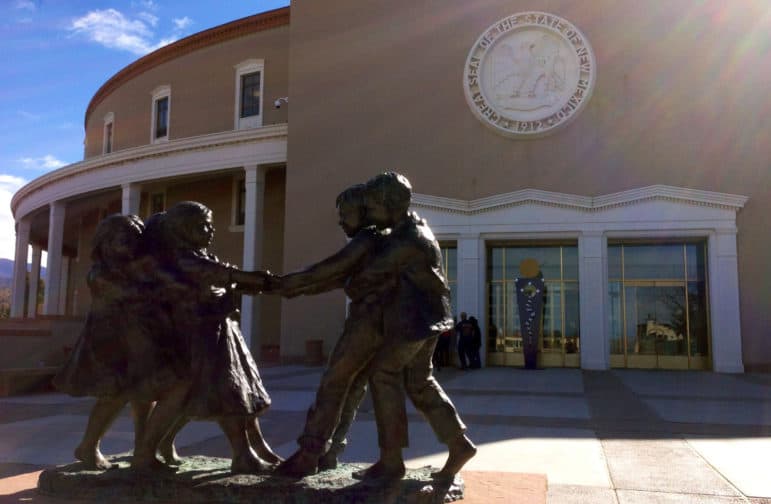
Heath Haussamen / NMPolitics.net
The bill would allow the medication to be given to those trained to use it, instead of requiring in-person visits to a doctor, prescribing nurse or pharmacist.
The state House Health Committee unanimously supported a bill Tuesday that would make it easier for community health workers, family members, first responders and social services agencies to administer an antidote for opioid overdoses.
Under House Bill 277, sponsored by Republican Rep. Terry H. McMillan, a Las Cruces surgeon, the state Department of Health would revise prescribing guidelines for naloxone so that standing orders for the medication can be given to those trained to use it, instead of requiring in-person visits to a doctor, prescribing nurse or pharmacist.
There is currently some ambiguity in New Mexico about whether naloxone, a medication known by the brand name Narcan, can be distributed by those without direct prescription authority.
Under the bill, the state Department of Health could implement policies allowing registered, community-based entities providing overdose prevention and education services to distribute naloxone — even if they are staffed with volunteers — as well as emergency workers and first responders.
The issue has been especially relevant in homeless shelters and in rural areas where there is a shortage of physicians and prescribing pharmacists who have been educated about the medication. Naloxone has two parts, a vial with the actual antagonist and an inhaler that mists the drug directly into the bloodstream through the nasal membrane.
When used properly, it can inhibit the opioid, restore breathing and reverse an overdose.
Dominick Zurlo, a harm-reduction program manager for the Department of Health, said there are no sources for naloxone in many rural areas. Changing the law would allow the department to train nonmedical outreach workers on naloxone use and opioid overdose symptoms.
Zurlo said there were 847 confirmed overdose reversals in the state with naloxone in 2014.
He said distribution of naloxone to emergency workers and others has been “one of the most important things that I’ve ever had the privilege of being able to get involved in.”
The Santa Fe Mountain Center is among the community groups that would be better able to distribute naloxone under the changes.
It was among the first groups doing outreach to rural areas in Northern New Mexico at the start of the AIDS epidemic and has worked with state needle exchange programs to curb the spread of hepatitis C.
Along with that has come efforts at overdose prevention, but many of its staffers are not certified nurses and don’t have authority to prescribe naloxone directly.
“Getting naloxone to those who need it has been very difficult and challenging,” said Tiffany Wynn, the executive director of the Santa Fe Mountain Center and a clinical counselor. “I deal with families who are in fear constantly they will lose their loved one. It’s a miracle to have this tool, and every family should have it in their household.”
Another bill that is moving through both the House and the Senate (HB 241 and SB 191) by Rep. Monica Youngblood, R-Albuquerque, and Senate President Pro Tem Mary Kay Papen, D-Las Cruces, would require the Health Department to post material about opioid overdose prevention on its website. The measure also encourages the Department of Corrections to make medical treatments available to inmates detoxifying from opioids.
A third provision of that bill, which would require insurance companies to cover opioid medications that are less prone to abuse by addicts, is meeting resistance from insurers who say the mandate is unnecessary and too restrictive.
Contact Bruce Krasnow at brucek@sfnewmexican.com.